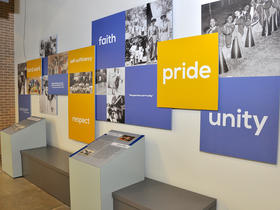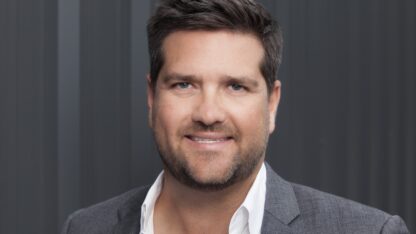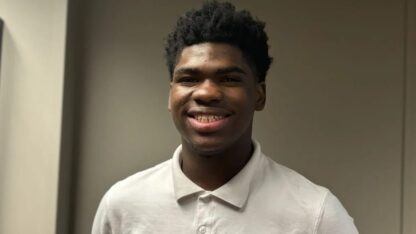Decatur Honors Historic Beacon Neighborhood With New Center
Metro Atlanta has a history of demolishing and renaming streets and sometimes wiping out entire neighborhoods. In the city of Decatur, there used to be an African-American neighborhood called “the Bottom” or later Beacon.
The city of Decatur is dedicating its new $38 million Beacon Municipal Center to that community.
The center pays tribute to the historically African-American neighborhood that once stood in its place.
Former Decatur mayor Elizabeth Wilson says she remembers when she first moved into the Beacon neighborhood in 1949.
“Atlanta Avenue was the major thoroughfare through the African-American community,” Wilson says. “It started on West Howard Street and went to downtown Decatur. That was the whole Business District for African-Americans. We had a little grocery store there, a theater, cafe, cab stand, laundromat, funeral home …”
But all of that was destroyed. Especially the public housing, Allen Wilson Terrace Homes, where she lived. In 1938, the first public housing was in Decatur, and the development was the second of its kind in Georgia.
“The houses were very small,” she says. “They were referred to as being the shotgun houses.”
They were also referred to as the “slum community” or the “the projects,” so they were destroyed in the city’s urban renewal initiatives. One renewal took place in the 1940s and the second in the 1960s. In 1961, about 200 African-American families were displaced from Beacon.
“We had to give up homes, we had to give up businesses,” Wilson says. “They relocated in other places, but you know, it wasn’t community anymore. We knew it was going to happen, but we didn’t have any way of stopping it.”
What stands there now are lots of city buildings, MARTA train tracks and the new Beacon Municipal Center.
It includes a renovated police station, courthouse, city offices, a recreation center with a swimming pool and a storm water facility that runs underneath the new soccer field.
Deputy City Manager Hugh Saxon says this completes the city’s plans to renovate all of its facilities.
“We get to do this about once every half-century,” Saxon says. “So we hope this will be a good resource for the next 50 years.”
In 2010, the city began a master plan to create this center. They wanted to dedicate it to the old neighborhood that once stood here, so Saxon says they hired a firm based in Toronto to develop a theme for the buildings “and incorporate as much history of the Beacon community as we could into the redevelopment plan.”
Outside in the courtyard of the municipal center, there’s a historical timeline along the walls. Inside the renovated buildings, there are maps, photographs and special exhibits.
There’s a plaque of Elizabeth Wilson, who made history in 1984 when she became a member of the City Commission.
“When I was elected, that was the first time an African-American was elected to represent this whole population,” Wilson says.
In 1993, she went on to become the city’s first African-American mayor.
She says African-Americans were pushed out of the Beacon community 50 years ago. Today, there’s another kind of displacement she’s worried about.
“The housing in the city of Decatur is so expensive. It’s not necessarily racial as much as it is economic,” Wilson says. “We’ve got to address that, so that my generation will not be priced out of living in the city of Decatur.”
Wilson continues to speak out for her community. She says she’s hopeful for the future of Decatur and the neighborhood she once called home.
“I tell people all the time, this is the holy ground because so many people lived here who had such wonderful lives,” Wilson says. “I feel like I’m celebrating the history of generations to come.”





